 W
WAmadís de Gaula ; Portuguese: Amadis de Gaula, [ɐmɐdjʒ dɨ gawlɐ]) is a landmark work among the chivalric romances which were in vogue in sixteenth-century Iberian Peninsula, although its first version, much revised before printing, was written at the onset of the 14th century.
 W
WThe Angel's Game is a prequel to 2001's The Shadow of the Wind, by Spanish author Carlos Ruiz Zafón. The novel marks a return to The Cemetery of Forgotten Books in Barcelona's Raval district, and the Sempere & Sons bookshop. Like The Shadow of the Wind, it was translated into English by Lucia Graves and published in 2009.
 W
WAt Close Quarters is a 2007 novel by Spanish author Eugenio Fuentes. Martin Schifino's English translation appeared in 2009 under Arcadia Books' imprint Euro Crime.
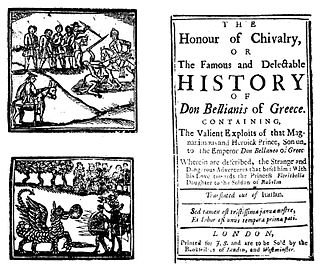 W
WBelianís of Greece is the eponymous hero of a Spanish chivalric romance novel, following in the footsteps of the influential Amadis de Gaula. An English abridgement of this novel was published in 1673. It is best known today because it was one of the books spared during the expurgation of Don Quixote's library in Chapter 6 of Part I of Don Quixote.
 W
WEl Buscón is a picaresque novel by Francisco de Quevedo. It was written around 1604 and published in 1626 by a press in Zaragoza, though it had circulated in manuscript form previous to that.
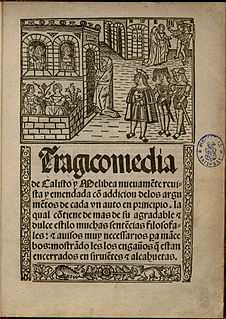 W
WThe Tragicomedy of Calisto and Melibea, known in Spain as La Celestina is a work entirely in dialogue published in 1499. It is attributed to Fernando de Rojas, a descendant of converted Jews, who practiced law and, later in life, served as an alderman of Talavera de la Reina, an important commercial center near Toledo.
 W
WCold Skin is the debut novel by Spanish author Albert Sánchez Piñol. The novel had remarkable success with numerous reprints and translations rights. It has been translated to 37 languages, and more than 150,000 copies were sold in its original edition.
 W
WCount Julian is a 1970 novel by the Spanish writer Juan Goytisolo. The title refers to Julian, count of Ceuta. The book was published in Mexico by Editorial Joaquín Mortiz. It is the second installment in the Álvaro Mendiola trilogy, which also includes Marks of Identity and Juan the Landless.
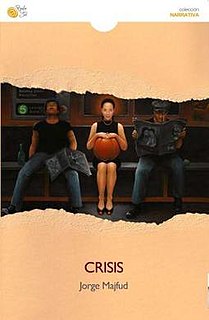 W
WCrisis is the seventh book of the Uruguayan American writer and literature professor Jorge Majfud. This fourth installment is based on the experiences of the author both as a migrant and a Latino out.
 W
WCristina Guzmán, Foreign Language Teacher is a 1936 novel by the Spanish writer Carmen de Icaza. A young single mother who has fallen on hard times, uses her skill with languages to become a teacher in a wealthy household. The work combined both feminist and conservative themes.
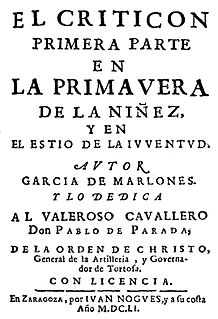 W
WEl Criticón is a Spanish novel by Baltasar Gracián. It was published in three parts in the years 1651, 1653 and 1657. It is considered his greatest work and one of the most influential works in Spanish literature, along with Don Quixote and La Celestina. El Criticón collects and expands his previous works.
 W
WEl delantero centro fue asesinado al atardecer (1989) is a novel from Manuel Vázquez Montalbán.
 W
WAn Episode in the Life of a Landscape Painter by César Aira was first published in 2000. Chris Andrews’ English translation was published by New Directions in 2006.
 W
WExiled from Almost Everywhere is a 2008 novel by the Spanish writer Juan Goytisolo. It tells the story of a Parisian pervert who ends up in an electronic afterlife where invisible souls communicate with e-mails.
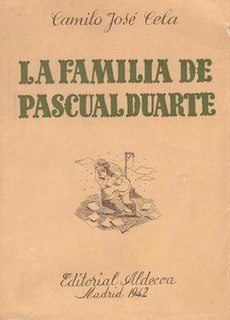 W
WThe Family of Pascual Duarte is a 1942 novel written by Spanish Nobel laureate Camilo José Cela. The first two editions created an uproar and in less than a year it was banned. A new Spanish edition was allowed in 1946.
 W
WFortunata y Jacinta, was written by Benito Pérez Galdós in 1887. It was published at the end of this year. It is, together with Leopoldo Alas y Ureña's La Regenta, one of the most popular and representative novels of Spanish literary realism. Born in Las Palmas de Gran Canaria, Canary Islands, the author went to Madrid, the capital, to study law at age 18. There he would create a literary world that was present in almost all his writings. The novel created a sensation upon its release because of its scathing critique of the Spanish middle class, and for its frank sexuality. While criticized by political and religious leaders, it was praised by peers of Galdós for its realistic depiction of life amongst all classes in 19th century Madrid.
 W
WEl fulgor y la sangre is the first novel written by Spanish writer Ignacio Aldecoa, first published in 1954.
 W
WGuzmán de Alfarache [ɡuðˈman de alfaˈɾatʃe] is a picaresque novel written by Mateo Alemán and published in two parts: the first in Madrid in 1599 with the title Primera parte de Guzmán de Alfarache, and the second in 1604, titled Segunda parte de la vida de Guzmán de Alfarache, atalaya de la vida humana.
 W
WḤayy ibn Yaqẓān is an Arabic philosophical novel and an allegorical tale written by Ibn Tufail in the early 12th century. The name by which the book is also known include the Latin: Philosophus Autodidactus ; and English: The Improvement of Human Reason: Exhibited in the Life of Hai Ebn Yokdhan. The novel greatly inspired Islamic philosophy as well as major Enlightenment thinkers.
 W
WThe Heart of Jade is a novel by Spanish author Salvador de Madariaga, first published in 1942. It is widely regarded as an exceptional example of modern Spanish-language literature.
 W
WA Heart So White by Javier Marías was first published in Spain in 1992 Margaret Jull Costa's English translation was first published by The Harvill Press in 1995. The book received the International Dublin Literary Award in 1997. An edition was published by Penguin Books in 2012, with an introduction by Jonathan Coe.
 W
WThe Hive is a novel written by the Spanish author Camilo José Cela, first published in 1950.
 W
WThe House Across the Street is a 2012 novel by the Spanish writer Esteban Navarro. It was her final work.
 W
WThe House of Ulloa is a novel by Emilia Pardo Bazán, published in Spanish in 1886, and in English by Penguin Classics in 1990. It was republished by Pocket Penguins in 2016.
 W
WHow I Became a Nun by César Aira is a novel set in Rosario, Argentina, about a precocious six-year-old named César Aira. César the character, who claims to be, alternately, a boy and a girl, has a hyper-developed sense of reality, a plethora of hang-ups, and a casual relationship with the truth. Contrary to what the name suggests, it is not a story of religious awakening, and begins and ends in the same year of the life of the narrator. The Spanish version was first published in 1993. Chris Andrews’ English translation was published by New Directions in 2007.
 W
WJuan the Landless is a 1975 novel by the Spanish writer Juan Goytisolo. Published by Seix Barral, it marked Goytisolo's return to a Spanish publisher following the death of Francisco Franco. It is the last installment in the Álvaro Mendiola trilogy, which also includes Marks of Identity and Count Julian.
 W
WJusep Torres Campalans is the "biography" of a fictitious Catalan painter written by Spanish novelist Max Aub and published in 1958. According to the book, during his stay in Paris Campalans became one of the co-founders of the Cubist movement. After the beginning of World War II, he is said to have moved to Mexico, where he spent the rest of his life as a recluse in Chiapas. The book even included a catalogue of his works for a planned exhibition at the Tate Gallery in 1942, with illustrations and photos. Parallels with Aub's life have been noted. The book is still often listed as a real biography.
 W
WL'auca del senyor Esteve is a novel by Santiago Rusiñol published in 1907, of which there is a theatrical version. On 12 May 1917, the theatrical version of this novel is first played in Teatre Victòria, Barcelona (Catalonia).
 W
WThe Labyrinth of the Spirits is a fiction novel by Spanish author Carlos Ruiz Zafón. This is the fourth and final book in the Cemetery of Forgotten Books series. The novel was initially released on 17 November 2016 in Spain and Latin America by Planeta Group. HarperCollins published the English translation by Lucia Graves on September 18, 2018.
 W
WThe Life of Lazarillo de Tormes and of His Fortunes and Adversities is a Spanish novella, published anonymously because of its anticlerical content. It was published simultaneously in three cities in 1554: Alcalá de Henares, Burgos and Antwerp. The Alcalá de Henares edition adds some episodes which were most likely written by a second author. It is most famous as the book establishing the style of the picaresque satirical novel.
 W
WMariona Rebull is a 1943 novel by the Spanish writer Ignasi Agustí. It is a historical romance, set amongst the high society of nineteenth century Barcelona. A young, neglected wife begins a passionate affair which ultimately ends in tragedy.
 W
WMarks of Identity is a 1966 novel by the Spanish writer Juan Goytisolo. It was published in Mexico through Editorial Joaquín Mortiz. It is the first installment in the Álvaro Mendiola trilogy, which also includes Count Julian and Juan the Landless.
 W
WMiau is a realistic novel by Spanish writer Benito Pérez Galdós, released in 1888. It tells a story about a middle-low class family of Madrid in the 19th century. The main character is Ramón Villaamil, an ex-employée from the Ministry of Economy and Finance. He lives with his wife doña Pura, his sister-in-law Milagros, his daughter Abelarda, his grandson Luis Cadalso, and his detestable son-in-law Víctor Cadalso. Víctor's wife, Luisa Villaamil, who is dead, was the mother of Luis.
 W
WMort de dama is the first novel of the Majorcan writer Llorenç Villalonga written in 1931. It is considered one of the first modern novels written in Catalan language from the Balearic Islands. It's a psychological and satirical novel, in which the author carries out a criticism of almost all social estates of that time, except for the Church. At that point, his criticism caused a great controversy among the readers, who made a negative review of the book. Villalonga himself dedicated it to «all those who do not get angry».
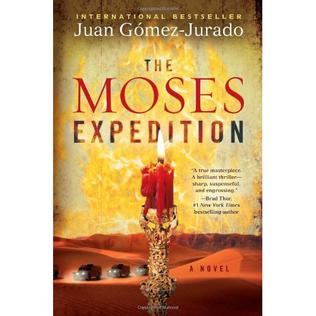 W
WThe Moses Expedition is a bestselling thriller novel by Juan Gómez-Jurado originally published in Spain in 2007 and in the UK in 2010 by Orion with the title Contract with God. The book topped the bestselling list in Europe and some of the American lists such as Amazon's, having sold 1.5 million copies. It also won awards such as the "Best Popular Culture Novel" and "Best Adventure Novel" in the 2011 International Latino Book Awards, held in New York City.
 W
WNada, which means "nothing" in Spanish, is the first novel of Spanish author Carmen Laforet, published in 1945.
 W
WEnrique Criado Navamuel is a Spanish diplomat and writer.
Nínay is the first novel authored by a native Filipino. Originally written in the Spanish language by Pedro Alejandro Paterno when he was twenty-three years old and while living in Spain in 1885, the novel was later translated into English in 1907 and into Tagalog in 1908. According to Dominador D. Buhain in his book A History of Publishing in the Philippines, being the first Filipino novel, Ninay marked the beginning of the awakening of national consciousness among the Filipino intelligentsia. Being a "largely cultural" novel, the narrative provides a "folkloristic tour" of the distinctive culture of the Philippines. Composed of 262 pages, the 1908 Tagalog version of the novel was published by the Limbagan Nang La Republika Kiotan Bilang 30 during the American period in Philippine history.
 W
WPeople in the Room is a novel by Argentinian author Norah Lange, originally published in Spanish under the name Personas en la sala in 1950. The English version, translated by Charlotte Whittle, was published in August 2018. In 1959, the Argentine Writer’s Association bestowed the novel with the Gran Premio de Honor. The book was notable for diversifying existing feminine themes expected of female Argentine authors at the time into new areas.
 W
WPlatero and I is a 1914 Spanish prose poem written by Juan Ramón Jiménez. The book is one of the most popular works by Jiménez, and unfolds around a writer and his eponymous donkey, Platero ("silvery"). Platero is described as a "small donkey, a soft, hairy donkey: so soft to the touch that he might be said to be made of cotton, with no bones. Only the jet mirrors of his eyes are hard like two black crystal scarabs."
 W
WThe Portrait of Lozana: The Lusty Andalusian Woman is a book written in Venice by the Spanish editor of the Renaissance, Francisco Delicado, in 1528, after he escaped from Rome due to the anti-Spanish sentiment that uprose after the sack of Rome a year earlier. Published anonymously, the book contains a description of the life in Rome's underworld during the first third of the 16th century. It is considered a book descendant of Celestina because of the literary genre, the novel in dialogue, and one of the earliest manifestations of the picaresque novel.
 W
WThe Prince of Mist is a 1993 mystery and horror young adult novel by Carlos Ruiz Zafón. It was initially published in Spanish by Editorial Planeta and later in an English translation by Lucia Graves by Little, Brown Books for Young Readers in 2010. The Prince of Mist was Zafón's first novel.
 W
WLa Regenta is a realist novel by Spanish author Leopoldo Alas y Ureña, also known as Clarín, published in 1884 and 1885.
 W
WLa Reina de América is a novel by Uruguayan author Jorge Majfud. It was published by Baile del Sol in 2002.
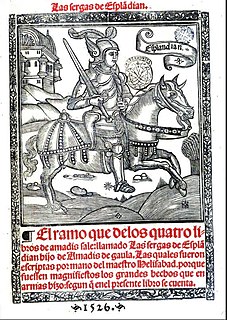 W
WLas Sergas de Esplandián is a novel written by Garci Rodríguez de Montalvo in the late fifteenth or early sixteenth century. The novel is a sequel to a popular fifteenth century set of chivalric romance novels, Amadís de Gaula. While the novel itself has met with some criticism for its lack of literary style, it achieved particular notability in 1862 when Edward Everett Hale concluded that the novel was the origin of the name California.
 W
WSoldiers of Salamis is a novel about the Spanish Civil War published in 2001 by Spanish author Javier Cercas. The book was acclaimed by critics in Spain and was top of the best-seller book list there for many months. A film adaptation Soldados de Salamina was released in 2003. The English translation by Anne McLean won the Independent Foreign Fiction Prize for 2004.
 W
WTomorrow in the Battle Think on Me by Javier Marías was first published in 1994. Margaret Jull Costa’s English translation was published by The Harvill Press in 1996. The title is taken from William Shakespeare's Richard III, Act V, Scene 3.
 W
WTuareg (ISBN 184694192X) is a thriller novel written by Spanish author Alberto Vázquez-Figueroa. This novel was his most critically and commercially successful, with global sales in excess of 5,000,000 copies. It was adapted into a 1984 movie starring Mark Harmon, Tuareg – The Desert Warrior.
 W
WLa velocidad de la luz It is the fifth book of narrative Spanish writer Javier Cercas. First published for Tusquets Editores in March 2005.
 W
WYour Face Tomorrow, Volume 1: Fever and Spear is a 2002 novel by the Spanish writer Javier Marías. Margaret Jull Costa's English translation was published by New Directions in 2005. Costa won the coveted Valle- Inclán Award for this translation.
 W
WYour Face Tomorrow Volume 2: Dance and Dream is a 2004 novel by the Spanish writer Javier Marías. Margaret Jull Costa's English translation was published by New Directions in 2006. It became a London Times Literary Supplement Best Book of 2007.
 W
WYour Face Tomorrow: Poison, Shadow and Farewell is a novel by the Spanish writer Javier Marías. third part of the Your Face Tomorrow trilogy.